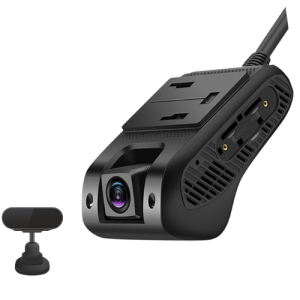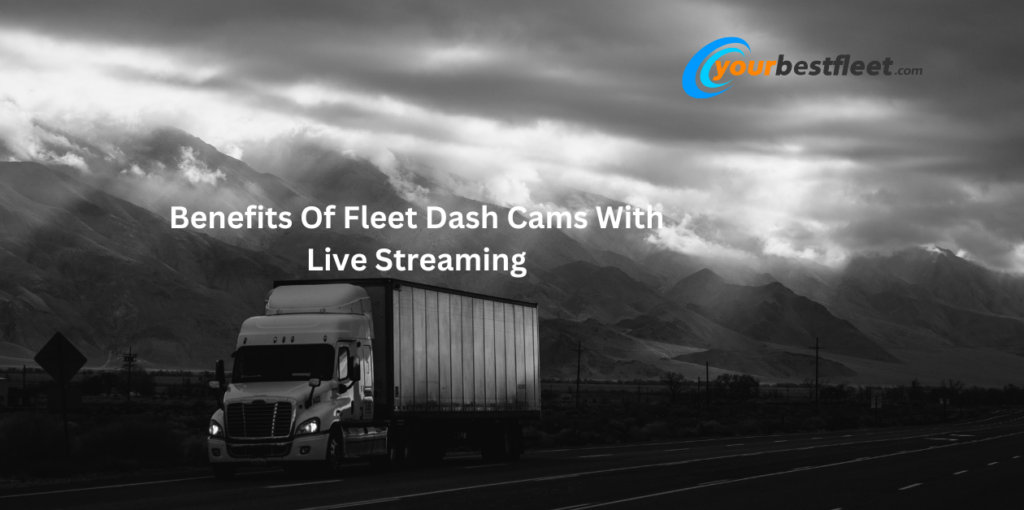Key Takeways
Live streaming dash cameras provide real-time video, allowing fleet managers to monitor drivers, road conditions, and incidents instantly.
These cameras help improve safety by detecting risky driving behavior, preventing false claims, and reducing accidents caused by distractions or fatigue.
Dash cameras with live streaming use cloud storage, GPS tracking, and encryption, ensuring secure access, data protection, and better fleet management.
Live streaming dash cams let fleet managers see what’s happening on the road in real time. They help track driver behavior, check road conditions, and respond quickly to incidents. These cameras do more than just record—they protect drivers from false claims, encourage safe driving, and reduce accidents caused by distractions or fatigue.
This article covers three key benefits of using live streaming dash cams to improve fleet safety and efficiency
What Is A Live Stream Dash Camera
A live stream dash cam is a camera installed in a vehicle that provides real-time video footage. Unlike regular dash cameras that only record, these cameras stream live video to a connected device, allowing fleet managers to monitor drivers and road conditions instantly.
Live streaming dash cams help improve safety, prevent false claims, and ensure drivers follow proper practices. They provide real-time insights, making fleet management more efficient and responsive to on-road incidents.

How Does Dashcam with Live Streaming Work?
Live streaming sends video over the internet in real time. A best dash camera for fleet can record and stream live video while driving. The process involves capturing, encoding, transmitting, and displaying video.
Capturing Video
Capturing video requires a dash camera that records footage while driving. The camera uses sensors and lenses to capture clear visuals in different conditions. An internet connection is needed to stream the recorded video live.
Encoding the Video
Encoding the video compresses the file size for smooth streaming. The H.264 or H.265 format is used to optimize video quality. Proper encoding prevents lag and buffering during streaming.
Viewers Watch the Stream
Viewers watch the stream on mobile apps, websites, or smart devices. Many platforms allow real-time interaction through comments and chat. The stream quality depends on both the broadcaster’s and viewer’s internet connection.
Saving the Video
Saving the video allows the dash camera to store footage on cloud storage or SD cards. The stored videos can be accessed later for review. This is useful for accident evidence or security monitoring.
Security and Privacy
Security and privacy settings control who can access the live stream. Platforms offer encryption and user permissions to prevent unauthorized access. Following privacy laws ensures safe and legal streaming.
This process makes live streaming from a dash camera smooth, secure, and reliable.
Features of a Dash Camera With Live Streaming

Real-Time Video and Remote Monitoring
Real-Time Video and Remote Monitoring allow a dash camera to stream live footage over the internet. Users can watch the video on smartphones, tablets, or computers. This helps in tracking vehicles and ensuring security.
High-Quality Recording and Night Vision
High-Quality Recording and Night Vision enable a dash camera to capture footage in 1080p, 2K, or 4K resolution. Infrared sensors or enhanced lenses improve visibility in low light. This ensures clear video during both day and night.
Cloud Storage and GPS Tracking
Cloud Storage and GPS Tracking allow a dash camera to save videos online and record real-time vehicle location. Cloud storage prevents data loss, while GPS helps track routes, speed, and positions. This is useful for security and fleet management.
Motion Detection and Two-Way Communication
Motion Detection and Two-Way Communication enable a dash camera to detect movement and allow voice interaction. It records activity around a parked vehicle and alerts the owner. Users can communicate remotely for added security.
Secure Streaming and Emergency Alerts
Secure Streaming and Emergency Alerts ensure a dash camera protects live video with encryption and detects crashes. It prevents unauthorized access and sends alerts with location details. This ensures privacy and quick emergency response.
How Does Live Streaming Affect Driver Privacy ?
Live streaming from a dash camera records real-time video, capturing the driver’s actions, surroundings, and location. It can expose personal details like face, license plate, and routes, increasing risks of identity theft and tracking. Employers may monitor drivers, and footage can be used in legal matters.
Hackers can access unsecured streams, leading to unauthorized surveillance. A dash camera may record people without consent, causing legal issues. Privacy settings like passwords and restricted access help protect driver information.
What Are the Additional Benefits of an AI Dash Camera?
Accident Prevention and Driver Safety
Accident Prevention and Driver Safety features in an AI dash camera detect sudden braking, lane departures, and collisions. It provides real-time alerts for obstacles, pedestrians, and unsafe driving behavior. Monitoring driver fatigue and distraction reduces accident risks.
Automatic Incident Recording and Evidence Collection
Automatic Incident Recording and Evidence Collection allow an AI dash camera to capture crashes, near-misses, and reckless driving. The footage is securely stored for insurance claims and legal cases. Cloud storage prevents data loss in case of damage or theft.
Theft, Vandalism, and Parking Security
Theft, Vandalism, and Parking Security features in an AI dash camera use motion detection to record suspicious activity. It captures real-time footage of break-ins or vandalism. Alerts notify vehicle owners of unauthorized movement.
Traffic Rule Compliance and Route Optimization
Traffic Rule Compliance and Route Optimization help an AI dash camera detect speed limits, stop signs, and road regulations. It alerts drivers to prevent violations and penalties. Route optimization reduces fuel consumption and travel time.
Emergency Assistance and Quick Response
Emergency Assistance and Quick Response in an AI dash camera detect severe crashes and send alerts. It notifies emergency contacts or authorities with location details. This ensures quick medical or roadside support.
Matrack Dash Camera Live Streaming
Matrack dash camera has dual-facing cameras that monitor both the road and the driver. It provides live streaming, allowing vehicle owners or fleet managers to view real-time footage remotely. Audio alerts warn drivers about lane departures, distractions, or drowsiness to prevent accidents.

High-resolution recording captures clear video even in low-light conditions for better visibility. Motion detection helps record suspicious activity around the vehicle, enhancing security. Continuous safety feedback provides reports on driving behavior to improve road safety.
Conclusion
A dash camera with live streaming provides real-time monitoring, improves safety, and helps track vehicles. It prevents false claims, alerts drivers to risks, and records clear footage for evidence. Features like GPS tracking, motion detection, and cloud storage enhance security and efficiency. AI functions such as driver monitoring and collision alerts reduce accident risks. Privacy settings and encryption protect video from unauthorized access. A dash camera helps fleet managers and drivers stay safe and informed.
James Johnson is a former truck driver who now works as a writer, specializing in the trucking industry. With over 15 years of experience on the road, James has a unique perspective on the challenges and opportunities faced by truck drivers and the trucking industry as a whole. His writing focuses on issues such as safety, regulation, and the latest industry trends. His work has been featured in several trucking publications and he has received recognition for his contributions to the industry. In his free time, James still enjoys being around trucks and often attends truck shows and other industry events.


